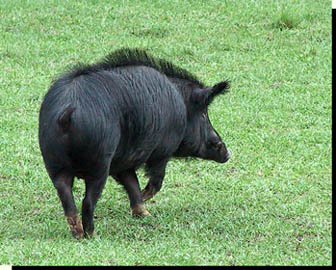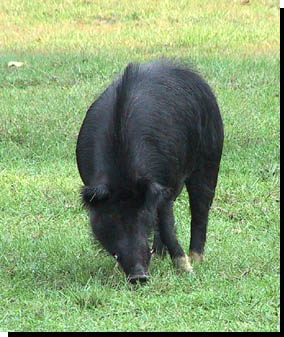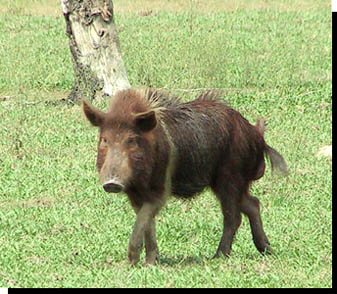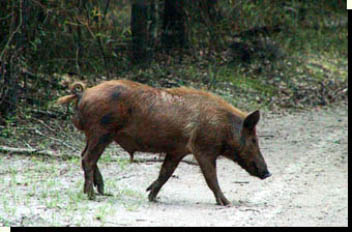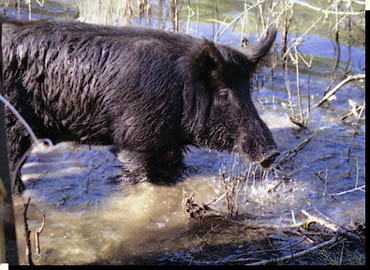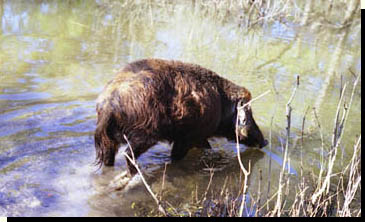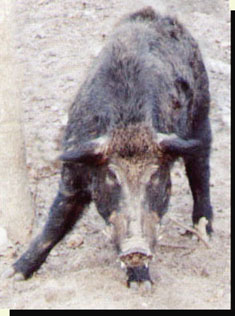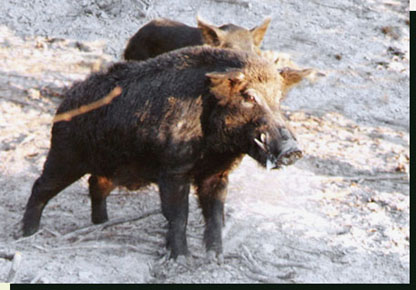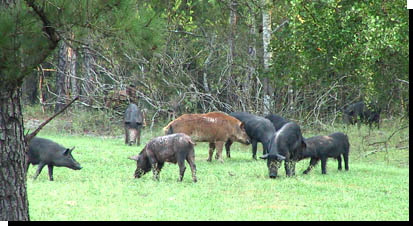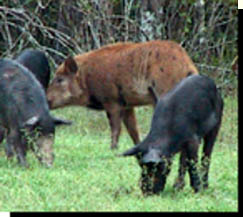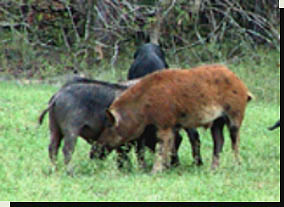Here is a close-up
of the boar as he works himself up for a confrontation, popping his jaws
which sharpens his long, pointed cutters on the blunt upper whetters.
The popping makes the saliva get foamy and the foam slobbers out of the hog's
mouth. A slobbering hog is a dangerous hog, even more so when he's
fearful. He can lunge to attack in a flash.
Underestimating the speed and agility of an agitated boar is a grave, even deadly, mistake. |
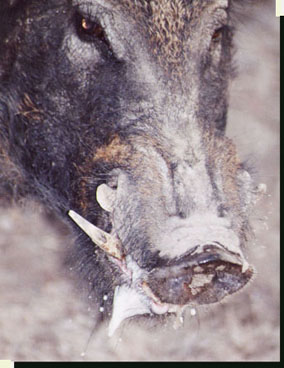 |
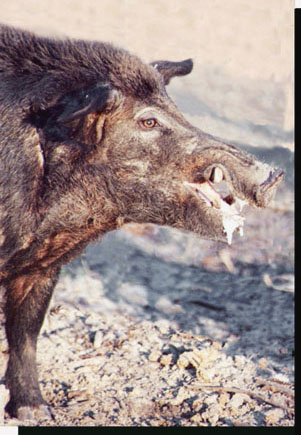
|
A
side view of the boar. The upper lip makes a pronounced curl over his
big whetter. But the thinness of the skin on his snout tells that
he's an older boar.
Look at the wrinkly skin on his neck and chest, and how the skin on his shoulder actually
wraps around the edge of his shield, making it look like a plate.
The view of him stiff-legged above shows the skin at the top of his right foreleg folding over in a wrinkle.
It's probably his age that makes him feel insecure about a confrontation.
In his prime, he must have held his own or he would have never made
it to this age, and he wouldn't have such a thick shield.
|
Sometimes size says it all.
This
monster boar's body posture isn't proud or strutting...but he's enormous,
in excellent shape and the
thick roll of his lip tells you that the teeth he's got under it aren't small. Very few hogs would want to take him on.
These huge, whale-like boars don't have to bother advertising--except
to another behemoth. They don't want to move around any more than necessary.
You won't see them cutting a jig like the 250 and under hogs. He's mature but not old as you can see by the thickness of his skin. He's probably 7 or 8 years old.
Sadly, he thought too well of himself and made the mortal mistake of taking on the buffalo. We didn't see the action, but found him bluntly smashed up in a way that only the buffalo could have done.
|
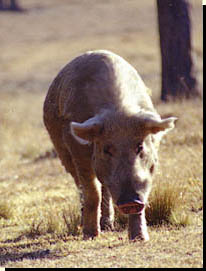
|

|
A
much smaller and younger boar--almost 300 pounds and 4 to 5 years old.
He's
bayed up by the dogs and is giving his options serious thought. His
mind is working with cool calculation.
His body's tense, and he looks rooted to the ground. It would be easy
to underestimate how actively he is planning his escape (maybe that's his
strategy), and how quickly he can explode into violent retribution.
He's a boar to never take your eyes off of--not for a second. He's desperate, determined and no dummy.
|
Another
boar with some years and experience. His head is down and he's ready to
stand his ground, but he's not cocky and is not spoiling for a fight.
With tusks like his even a tough boar with a thick shield would have to be careful. This old soldier might not win a
pushing match, but would probably score big in a cutting match.
|
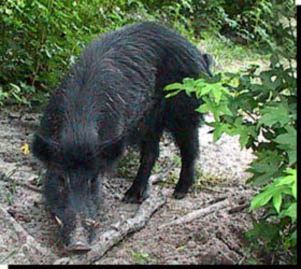
|
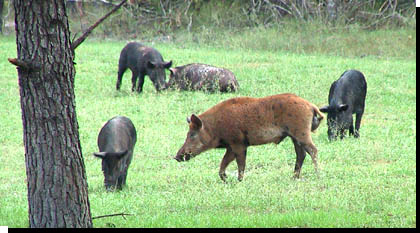
|
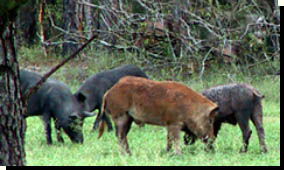
|
| Talk about cocky. This 300 lb. red boar hog is bullying a group of 200 lb. barrow hogs.
He's swaggering around like he owns the place, and is taking personal liberties
wherever he wants. He's rudely sniffing, poking
and jabbing at will.
|
He clearly
outclasses every hog around him and has nothing to prove, so his intentions
are not just to declare his status. With his obnoxious intrusions,
the barrows seem to be trying to lay low..."Just minding my
own business."
|
